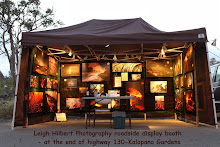
Activity all through the eruption zones from Halema’uma’u lava-filled vent to Pu`u O`o crater encrusted lava lake, as well as the lava tube surface breakouts and the ocean entry have all been going through swings of all sorts this past week: meaning basically that all these zones exhibited strong lava shows the past week then abruptly diminished.
These swings were also reflected on the electronic tilt monitors stationed at Kilauea Caldera and the Pu`u O`o crater as show in the graph here:

During the height of activity October 6th, USGS took some good aerial clips of the new molten lava activity within the Pu`u O`o crater floor and have them posted on their Imagespage. Here is the link to that clip
I have not been able to get out to the coastal lava flow areas for a few days but from what reports I have obtained there seems to be little change from my last posting except for a decrease in surface flows along the lava tubes and a slight decrease in the ocean entry lava. ( My Internet service provider was down yesterday so I was unable to post my blog).
Kilauea Volcano Facts: Extrapolated
from USGS volcanic gases page.

Laze plumes are very acidic
Extreme heat from lava entering the sea rapidly boils and vaporizes seawater, leading to a series of chemical reactions. The boiling and reactions produce a large white plume, locally known as lava haze or laze, which contains a mixture of hydrochloric acid (HCl) and concentrated seawater. This is a short-lived local phenomenon that only affects people or vegetation directly under the plume.

Avoid standing beneath a laze plume

Dense laze plumes, such as that shown here contain as much as 10-15 parts per million of hydrochloric acid. These values drop off sharply as the plume moves away from the lava entry areas. During along-shore or on-shore winds, this plume produces acid rain that may fall on people and land along the coast. This rain (pH 1.5 to 2), often more acidic that lime juice or stomach acid, is very corrosive to the skin and clothing. Visitors to the lava entry areas should avoid standing directly in, under, or downwind of the laze plume.











No comments:
Post a Comment